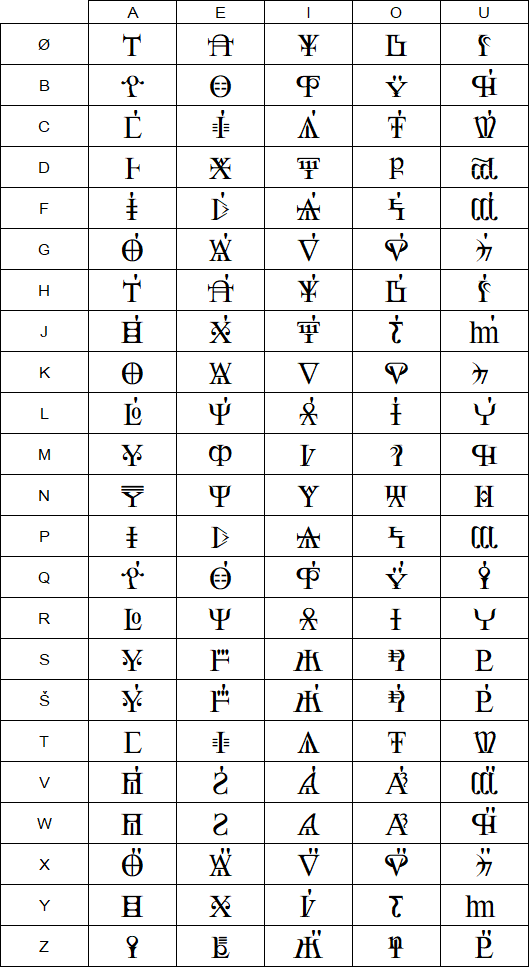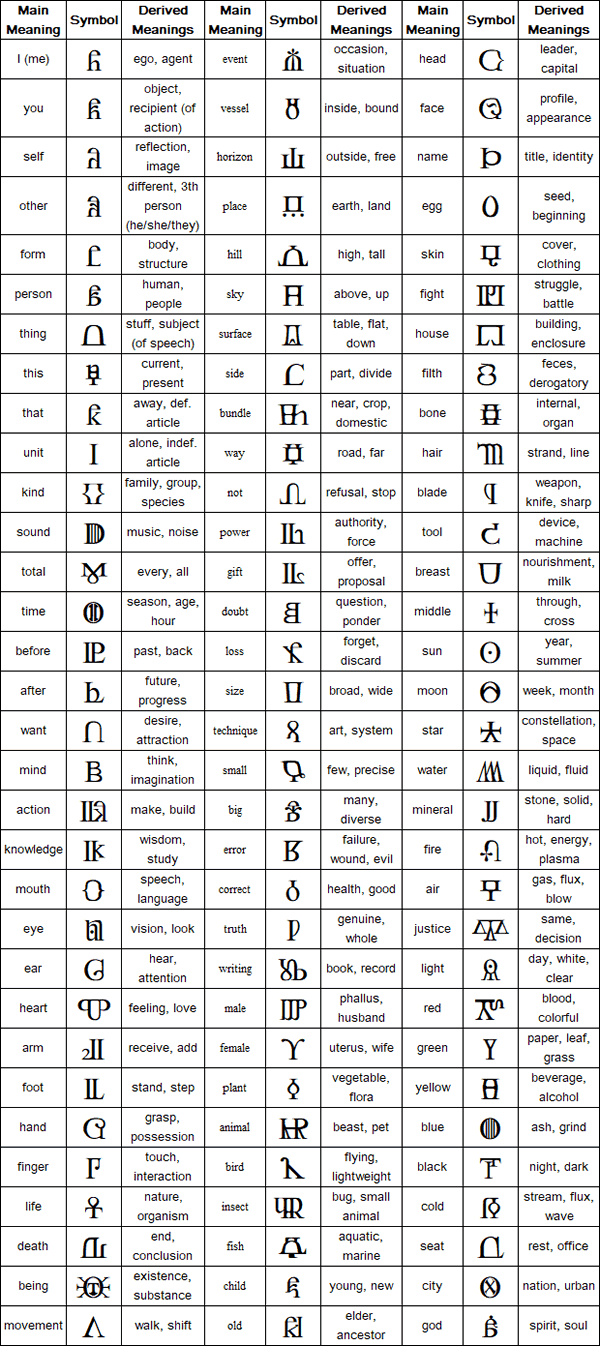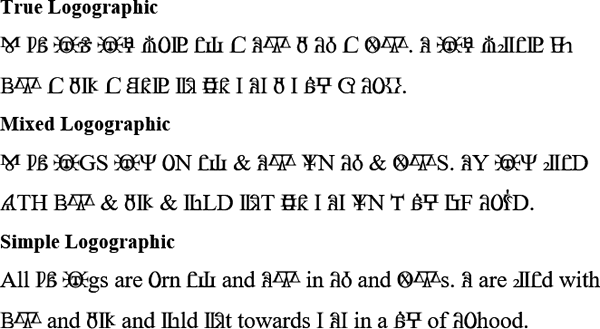The Latin Logographic script was created by Lourenço Menezes D'Almeida as an alternative evolution of the Latin script used in many parts of the world today. Inspired by the Japanese writing system, this script uses a combination of logographic, syllabic and phonetic symbols for the formation of words in a sentence.
The main part of the script is its logographic particles, which can be used either as entire words and word-compounds, or as stems in verbs, adjectives and adverbs. Like the current Latin alphabet used today, these logograms are ultimately derived from Egyptian hieroglyphs, but their use as conveyors of entire units of thought is conserved.
This means that Latin Logograms encode a whole meaning in them. This meaning can be transmitted in whatever language the logogram is being employed, granted the appropriate grammatical and morphological structures for that language are properly used. For example:

While this usage is reminiscent of Japanese kanji, the number of Latin logograms available is far reduced. There are only 96 logograms in total, meant to represent the most basic concepts found in every language. So the whole script can be learned and used with much more ease than other logographic systems. For example:

In order for such a reduced number of symbols to be able to encompass the most diverse tange of terms possible, some logograms can also have more than one meaning depending on their use in a word or sentence. For example:

Logograms by themselves can input almost any grammatical idea, and theoretically could be used alone in order to write any language. This form of writing can be called 'True Latin Logographic', and it employs the different logograms in a variety of roles inside the sentence. Like this:

In this example, we can see the logogram for before used after the logogram for possession to provide a meaning of simple past, from 'take' to 'took'. The verbal nature of this set is implied from both the position of the word in the sentence, as well as the combination itself (some of the symbols are used in front of others to transmit a sense of verbal tenses: past, present and future).
True Latin Logographic can be considered very refined and perhaps even poetic, but it is particularly cumbersome for common use. The need to employ solely logograms for every single word makes it inevitable that some possibly arbitrary pairings will be formed, such as nt for 'Latin' (from the popular etymology for 'Latium' as "broad-land").
In order to make the script more practical for daily use, two secondary systems are meant to accompany it. Those are the Latin Syllabary and Latin Alphabet. When used together, they will function similarly to Japanese hiragana and katakana respectively, with some variations. This form is called 'Mixed Latin Logographic'.



All human beings are born free and equal in dignity and rights. They are endowed with reason and conscience and should act towards one another in a spirit of brotherhood.
(Article 1 of the Universal Declaration of Human Rights)
Constructed scripts for: Ainu | Arabic | Chinese languages | Dutch | English | Hawaiian | Hungarian | Japanese | Korean | Lingala | Malay & Indonesian | Persian | Tagalog / Filipino | Russian | Sanskrit | Spanish | Taino | Turkish | Vietnamese | Welsh | Other natural languages | Colour-based scripts | Tactile scripts | Phonetic/universal scripts | Constructed scripts for constructed languages | Adaptations of existing alphabets | Fictional alphabets | Magical alphabets | A-Z index | How to submit a constructed script
[top]
You can support this site by Buying Me A Coffee, and if you like what you see on this page, you can use the buttons below to share it with people you know.

If you like this site and find it useful, you can support it by making a donation via PayPal or Patreon, or by contributing in other ways. Omniglot is how I make my living.
Note: all links on this site to Amazon.com, Amazon.co.uk
and Amazon.fr
are affiliate links. This means I earn a commission if you click on any of them and buy something. So by clicking on these links you can help to support this site.
[top]